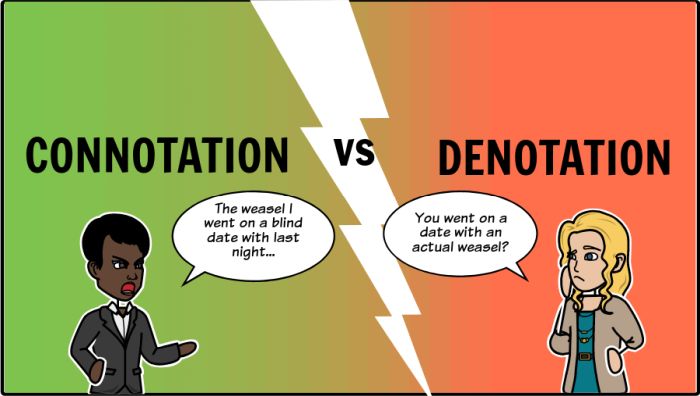A literary device is a technique that helps an author achieve their purpose. Technically, there are hundreds of examples of literary devices, but a lot of them are very technical and not really applicable to most students (or even writers). This list includes examples of literary devices that will help kids of all ages read and write more effectively.
Allegory
In an allegory, the writer uses one thing to stand in for another. In other words, what seems like a simple tale has a much deeper, hidden meaning. Allegories are often used for political or moral commentary.
Example: George Orwell’s Animal Farm appears to be a story about farm animals rebelling against the farmer. But Orwell was actually writing about the Bolshevik Revolution in Russia, using the animals and farmers as stand-ins for real people like Karl Marx and Joseph Stalin.
How to teach it: Aesop’s Fables are an excellent introduction to allegory, since each one has a moral message. Learn more at Collaboration Cuties.
Alliteration, Assonance, and Consonance

Source: The Hyperbolit School
These examples of literary devices all refer to the sounds of words. In alliteration, all or most of the words begin with the same sound (usually a consonant), while in assonance, they use the same vowel sound throughout. Consonance is the repeated use of similar sounds throughout words—think tongue twisters!
Examples:
- Alliteration: Peter Piper picked a peck of pickled peppers.
- Assonance: Try as I might, the kite did not fly.
- Consonance: She sells seashells by the seashore.
How to teach it: The iPhones and Alliteration activity at Primarily Speaking works for assonance and consonance too.
Allusion
An allusion is a way to call something to mind without stating it directly. It requires the reader to have shared background knowledge with the writer. Allusions are often historical, mythological, literary, or religious in nature.
Example: “He never wants to spend money on anything. He’s such a Scrooge!” This allusion requires the reader to be familiar with the character of Ebeneezer Scrooge from Dickens’ A Christmas Carol, a notorious tightwad.
How to teach it: 3 Questions To Ask Students To Help Them Better Understand Allusion from The Daring English Teacher
Analogy
An analogy shows how two seemingly dissimilar things are actually alike, to help illustrate a larger point. It’s similar to a metaphor or simile, but usually more complex. Writers often use an analogy to help a reader understand a difficult topic by relating it to something they already know.
Example: Perhaps the easiest analogy for students to understand is Forrest Gump’s famous statement that “Life is like a box of chocolates. You never know what you’re gonna get.” In other words, when you choose a chocolate candy from a box and bite into it, you have no way of knowing what’s inside. It might be good or bad, depending on your own personal tastes. Life is the same way—we can’t predict what experiences will happen to us next, and what’s good for one might be bad for another.
How to teach it: How To Teach Analogies to Elementary Students at Keep ‘Em Thinking
Anthropomorphism
When an author uses anthropomorphism, they give human characteristics to non-human beings or objects. It’s similar to personification, but in anthropomorphism, the being or object generally actually acts like a human.
Examples: Black Beauty, by Anna Sewell, is the story of a horse’s life, narrated by the horse just a like a person writing their autobiography. The Little Engine That Could tells the tale of a steam engine and its efforts to make it up a steep hill, sharing the thoughts and feelings of the engine as though it were a human.
Aside
When a character shares their thoughts directly with the audience, that’s known as an “aside.” (This is sometimes known as “breaking the fourth wall” since the character is acknowledging that the audience exists.) This is most commonly used in plays, but you’ll also find it in third-person narration, when the narrator expresses an opinion about the action instead of simply telling the tale.
Example: In the musical Hamilton, George Washington speaks directly to the audience during the number “Right-Hand Man.” As the action around him pauses, he turns to the audience and asks, “Can I be real a second? For just a millisecond? Let down my guard and tell the people how I feel a second?”
How to teach it: Definition and Famous Examples of Asides in Literature
Caricature
You’re probably familiar with a caricature drawing, in which a person’s most identifying (and often worst) qualities or features are emphasized. In writing, caricature is similar. A writer emphasizes a character’s qualities, often for humorous effect.
Example: Many Disney villains are caricatures, such as Gaston in Beauty and the Beast. Gaston is portrayed as the perfect example of the kind of man any woman would love. “No one’s slick as Gaston / No one’s quick as Gaston / No one’s neck’s as incredibly thick as Gaston / For there’s no man in town half as manly / Perfect, a pure paragon!”
How to teach it: Political Cartoons in the Classroom at Brainy Apples
Connotation and Denotation

Source: Storyboard That
These examples of literary devices refer to a word’s meaning. A denotation is the dictionary definition of a word, while connotation refers to the cultural and emotional associations of a word. Words can have positive and negative connotations.
Example: Wall Street’s denotation is a street in lower Manhattan where the New York Stock Exchange is located. But it’s often used connotatively to refer to wealth and power. “He has McDonald’s income but Wall Street aspirations.”
How to teach it: How To Teach Denotation and Connotation at Vocabulary Luau
Dialect and Diction
Two more examples of literary devices that are often taught together are dialect and diction. Dialect is the word usage, syntax, and grammar of a specific group of people, while diction refers to the way they pronounce words. These groups could be by region (Southern American English), class (British cockney), or other cultural differences. Use of dialect and diction helps to create a strong feeling of character, though it can sometimes be harder for a reader to understand.
Example: Mark Twain uses dialect extensively in works like Huckleberry Finn, as does Harper Lee in To Kill a Mockingbird. In the Harry Potter series, Hagrid speaks with a distinctive West Country accent: “I am what I am, an’ I’m not ashamed. ‘Never be ashamed,’ my ol’ dad used ter say, ‘there’s some who’ll hold it against you, but they’re not worth botherin’ with.’”
How to teach it: Reading a Dialect Worksheet at Great Schools
Double Entendre
This French phrase (pronounced “ahn-TAHN-druh”) translates to “double meaning,” and it describes a word or phrase that has just that—more than one meaning. These can often be a little risqué or off-color.
Example: In the short story “The Most Dangerous Game,” the title itself is a double entendre. “Game” can refer to both the creature being hunted as well as the “game” of the hunt itself.
How to teach it: Double Entendre Examples and Worksheets at Kidsconnect
Flashback
A flashback interrupts the flow of a story to tell readers about an event that happened previously. They can help provide a greater understanding of a character, and reveal important parts of the story that haven’t been shared with the reader yet.
Example: The Harry Potter books use flashbacks extensively to fill in the backstories of Harry and his nemesis, Lord Voldemort. For example, when Harry uses the Pensieve to view other people’s memories, the writer is using flashbacks.
How to teach it: How To Write Flashbacks, With Examples, at Self-Publishing School
Foreshadowing
This literary device helps an author build suspense by hinting at what’s to come. These hints are usually less obvious the first time you read something but become very apparent when you reread. Foreshadowing can be dialogue, symbols, omens, and even the setting of a story itself.
Example: In Shirley Jackson’s “The Lottery,” the characters express and display subtle signs of fear, even though they seem to be gathering for a joyous event. Their apprehension becomes clear when the reader realizes the “winner” of the lottery will actually be stoned to death.
How to teach it: Top Short Stories To Teach Foreshadowing and Suspense in Your Middle School ELA Classroom at Language Arts Teachers
Hook (or Narrative Hook)
When you start reading a book and are captivated from the first chapter (or even the first sentence!) this is known as a “hook.” A hook might be an intriguing statement, a strange setting, an unusual character, or an engaging theme.
Example: “Marley was dead: to begin with.” In the opening of Dickens’ A Christmas Carol, the narrator emphasizes over and over that Marley was indeed dead, leading the reader to wonder why that is so very important to the story. The only way to find out is to read on.
How to teach it: 7 Sensational Essay Hooks That Grab Readers’ Attention at Academic Writing Success
Idiom
An idiom is a phrase that has a meaning different from the actual words, used commonly by a group of speakers. Every language has its own idioms, and they’re difficult to understand on their own for those learning the language. (Idioms are examples of literary devices that can sometimes be overused by authors. Instead of using someone else’s words, try to come up with expressive language of your own.)
Examples:
- It’s raining cats and dogs.
- Don’t beat around the bush—just tell us what happened.
How to teach it: 50 Idioms To Teach Kids and Use in Idiom of the Day Lessons
Irony

Source: What Is Irony? at Grammar Monster
There are several examples of literary devices that have to do with irony. Though the term “irony” is often used to refer to a state of affairs that is contrary to what one expects (“She won the lottery but was already a millionaire—how ironic.”), its literary definitions are different.
Dramatic Irony
In dramatic irony, the audience is aware of something a character is not. This gives very different meaning to a character’s words or actions.
Example: Romeo and Juliet contains one of the most famous examples of dramatic irony. When Juliet is in a deep drugged sleep (which the audience knows about), Romeo finds her and assumes she is dead. He takes his own life in response. The audience can only watch in horror.
Situational Irony
When something happens that is different than what is expected, that’s called situational irony. Think of a fire station burning down, an English teacher making a grammar error, or a marriage counselor divorcing their spouse.
Example: O. Henry’s “The Gift of the Magi” is often cited as an example of situational irony. The wife sells her beautiful hair to buy her husband a chain for his beloved watch. Meanwhile, the husband has sold his watch to buy ornaments for her hair. (O. Henry was the master of situational irony, and nearly all of his short stories incorporate this literary device.)
Verbal Irony
In the literary sense, verbal irony is using language that’s seemingly contradictory to what you mean. This is often expressed as sarcasm or hyperbole.
Examples:
- “That explanation was as clear as mud.” (Sarcasm)
- “What lovely weather we’re having today,” she said, as the hurricane-force wind blew her umbrella down the street. (Hyperbole, understatement)
- “This is the worst thing that’s ever happened to anyone!” he said, as he saw that the shirt he’d ordered had come in the wrong color and size. (Hyperbole, overstatement)
How to teach it: 3 Fun Ways To Teach Irony at Brain Waves Instruction
Jargon and Slang
Jargon refers to words or phrases used in a specific job, trade, or field. Scientific fields often have a lot of technical jargon, which can make it difficult to understand for an outsider. Writers should be careful about using jargon without explaining the meaning. Jargon and slang are examples of literary devices that are easy to confuse. However, slang is informal language used within a particular community, and it is very casual.
Example: “Sarabeth didn’t show up for work today; I guess she’s AWOL.” AWOL is a military term meaning “Absent WithOut Leave.” If the writer used slang instead of jargon, they might say “Sarabeth ghosted us at work today; I don’t know where she is.”
How to teach it: Free Slang and Jargon Worksheet at Teachers Pay Teachers
Metaphor
A metaphor is a figure of speech that makes a comparison between two very different things, without using the terms “like” or “as.” These are usually short statements, but extended metaphors carry out the comparison more fully.
Examples:
- Love is a battlefield.
- Life is a highway.
- Extended metaphor: Sylvia Plath’s poem “Metaphors” is a collection of metaphors about being pregnant, beginning with “I’m a riddle in nine syllables.”
How to teach it: The Metaphor Challenge at Learning in Room 213
Monologue
In a monologue, one character speaks for an extended period of time. Writers use it to allow a character to tell their own story or share their thoughts, both with other characters and the audience.
Example: Shakespeare used monologues to great effect, such as Hamlet’s famous “To be, or not to be” speech.
How to teach it: A Ten-Step Process for Teaching Monologues at Edutopia
Motif
A motif is an object that repeats itself throughout a piece of writing and represents a theme of the work. A motif is a type of symbol, but it’s one that sums up a vital message of a piece of writing. Motifs are generally easy to understand and pretty obvious once you look for them.
Example: In The Wizard of Oz, the Yellow Brick Road represents Dorothy’s journey back to the place she calls home. The road twists and winds, taking her along an adventurous path. But in the end, Dorothy could have returned home without ever taking the road, simply by clicking her heels together. The Yellow Brick Road is a motif representing the theme of finding home within ourselves wherever our journey takes us.
How to teach it: Motif in Literature at Twinkl
Onomatopoeia
Bang! Crash! Zap! Any word that sounds like what it refers to or describes is onomatopoeia.
Examples: Comic book words head the list, of course, but other examples include words like hiccup, buzz, splash, cough, and roar.
How to teach it: Add a Pop! to Your Writer’s Workshop at Thyme to Read
Oxymoron
An oxymoron is a pair of descriptive words that seem contradictory. They’re often used humorously.
Examples: Friendly fire, living history, silent scream.
How to teach it: Oxymoron Lesson Plan at Education.com
Paradox
In literary terms, a paradox is a statement that seems to contradict itself at first but is actually true.
Examples:
- Less is more.
- The more you give, the more you get.
- The only constant is change.
How to teach it: What Is a Paradox in Writing? at MasterClass
Parody
A parody is an imitation of the style of a writer, genre, or artist, usually for comic effect.
Example: Jonathon Swift’s Gulliver’s Travels is one of the most famous parodies, a take on the popular travel narratives of the day. (It’s also a satire; see below.)
How to teach it: Writing a Parody at Musings From the Middle School
Personification

Source: What is Personification? at Learn Easy English
When an author personifies something, they connect it with human attributes and emotions. Personification is different than anthropomorphism, though, because the objects don’t actually talk or feel the emotion described. The author simply leads you to believe that they might.
Examples:
- My computer hasn’t worked right all day; it clearly hates me.
- As she finally stood up, her back cried out in pain.
- That chocolate cake over there is calling my name.
How to teach it: Teaching Personification Through Poetry at Read Write Think
Poetic Justice
Poetic justice describes an outcome where the good are rewarded and the bad are punished, in a fitting way.
Example: In Romeo and Juliet, the Montagues and Capulets face poetic justice for their vicious feud. Both families pay the price by losing those that are most precious to them.
How to teach it: For the Birds Pixar Short Video Guide at Teachers Pay Teachers
Pun
A pun is usually defined as “a play on words.” They use words with multiple meanings, or words that sound alike but mean something different.
Examples:
- Make like a tree and leave.
- It’s difficult for crabs to share, because they’re shellfish.
- Character names like Kim Possible and Cruella de Vil.
- “Now is the winter of our discontent / Made glorious summer by this sun of York.” (In this Shakespeare quote from Richard III, the word “sun” also means “son.”)
How to teach it: 10 Tearable Puns: An English Language Activity at Ellii
Red Herring
A red herring is a false or misleading clue that sends readers down the wrong path, especially in a mystery. According to LiteraryDevices.net, the term dates back to the early 1800s. “The journalist William Cobbett is credited with originating the term ‘red herring’ in an 1807 story. Cobbett criticized the press for prematurely reporting Napoleon’s defeat, and compared that act to using strong-smelling, smoked red herrings to distract dogs from another scent. Cobbett was accusing the press of intentionally using a fallacy to distract the public.”
Example: The character of Snape is an epic red herring throughout the Harry Potter books. Until the very end, the reader assumes Snape is on the side of evil Lord Voldemort, though he’s actually been working for good the whole time.
How to teach it: Interpreting and Using Red Herrings at Learn Bright
Satire
Satire uses humor, irony, exaggeration, and ridicule to expose and criticize stupidity or vices. Writers use satire to draw attention to social conventions, current events, trends, and more that they feel are wrong. Websites like The Onion use satire to comment on current events, especially politics.
Example: Aldous Huxley’s Brave New World is often cited as an example of satire, as is Gulliver’s Travels. In more current terms, TV shows like South Park or books like Douglas Adams’ The Hitchhiker’s Guide to the Galaxy series also rely on satire.
How to teach it: How To Teach Children Satire at Classroom
Simile

Source: What Is a Simile? at Grammar Monster
A simile is similar to a metaphor in that it compares two different things, but similes always use the words “like” or “as.” This makes similes much easier to find when you’re reading a text.
Examples:
- Sly as a fox.
- Fight like cats and dogs.
- Sweet as sugar.
How to teach it: How To Teach Similes Like a Rockstar at Rockin’ Resources
Stereotype
A stereotype uses one person or thing to represent an entire group, assuming that they’re all alike. They’re overgeneralizations, though they may often have some truth to them. These overgeneralizations can be harmful, especially when they refer to race, gender, culture, or sexuality.
Example: A Disney princess like Cinderella is a classic stereotype. Beautiful, charming, kind, and sweet, she is always getting into trouble that only a handsome prince can rescue her from. (The handsome prince is another stereotype.)
How to teach it: Bursting Stereotypes at Education World
Stream of Consciousness
Some examples of literary devices are just what they sound like. Stream of consciousness is one of those examples. It’s a flow of thoughts, without necessarily using proper punctuation, paragraphs, grammar, or other standard writing forms.
Examples: James Joyce rose to prominence with stream of consciousness writing in Ulysses and A Portrait of the Artist as a Young Man. “He is young Leopold, as in a retrospective arrangement, a mirror within a mirror (hey, presto!), he beholdeth himself.” (Bloom, Ulysses)
How to teach it: How To Master Stream of Consciousness
Symbolism
In its simplest form, symbolism is when one thing is used to represent another. Most writers rely heavily on symbolism to add depth to their work, relating everyday items to deeper feelings and themes.
Examples:
- In Moby Dick, the white whale symbolizes many things, including evil, nature, and fate. The symbolism is different depending on the character viewing it.
- The titular bird of To Kill a Mockingbird symbolizes innocence.
- Balloons represent hopes and dreams in the Disney Pixar movie Up.
How to teach it: Teaching Symbolism to Middle & High School Students at The Literary Maven
Tragic Flaw
A tragic flaw is one that brings about the downfall of a hero or protagonist. The character is generally able to overcome most things effortlessly, but their tragic flaw (often a secret) ultimately causes their demise. Common tragic flaws include pride, ambition, and greed.
Examples: In Shakespeare’s Othello, the main character’s tragic flaw is jealousy. Although Desdemona never actually betrays him, he believes she has and ultimately kills her in a fit of passion.
How to teach it: Teaching Tragic Flaw Through Visuals at Engaging and Effective Teaching



















